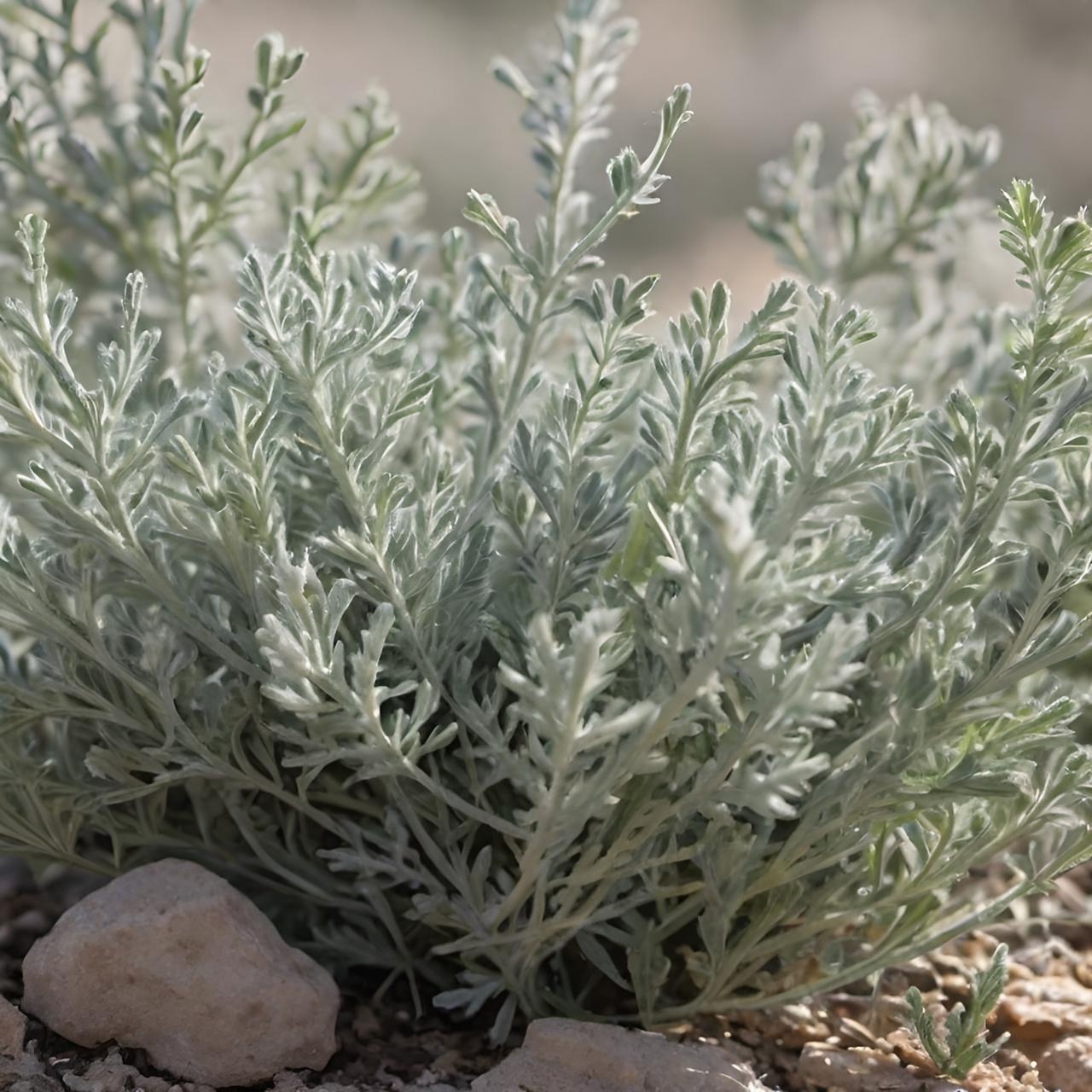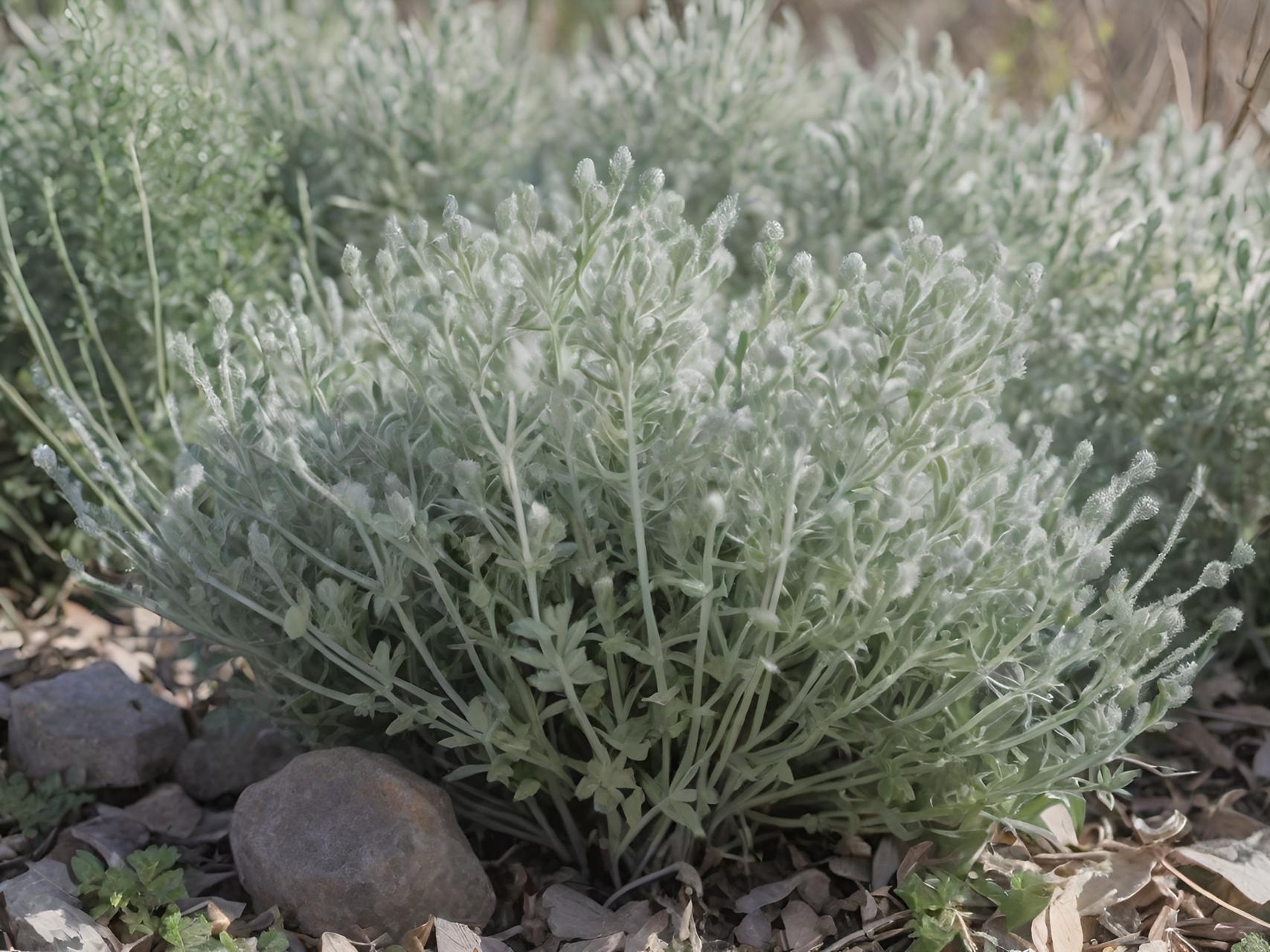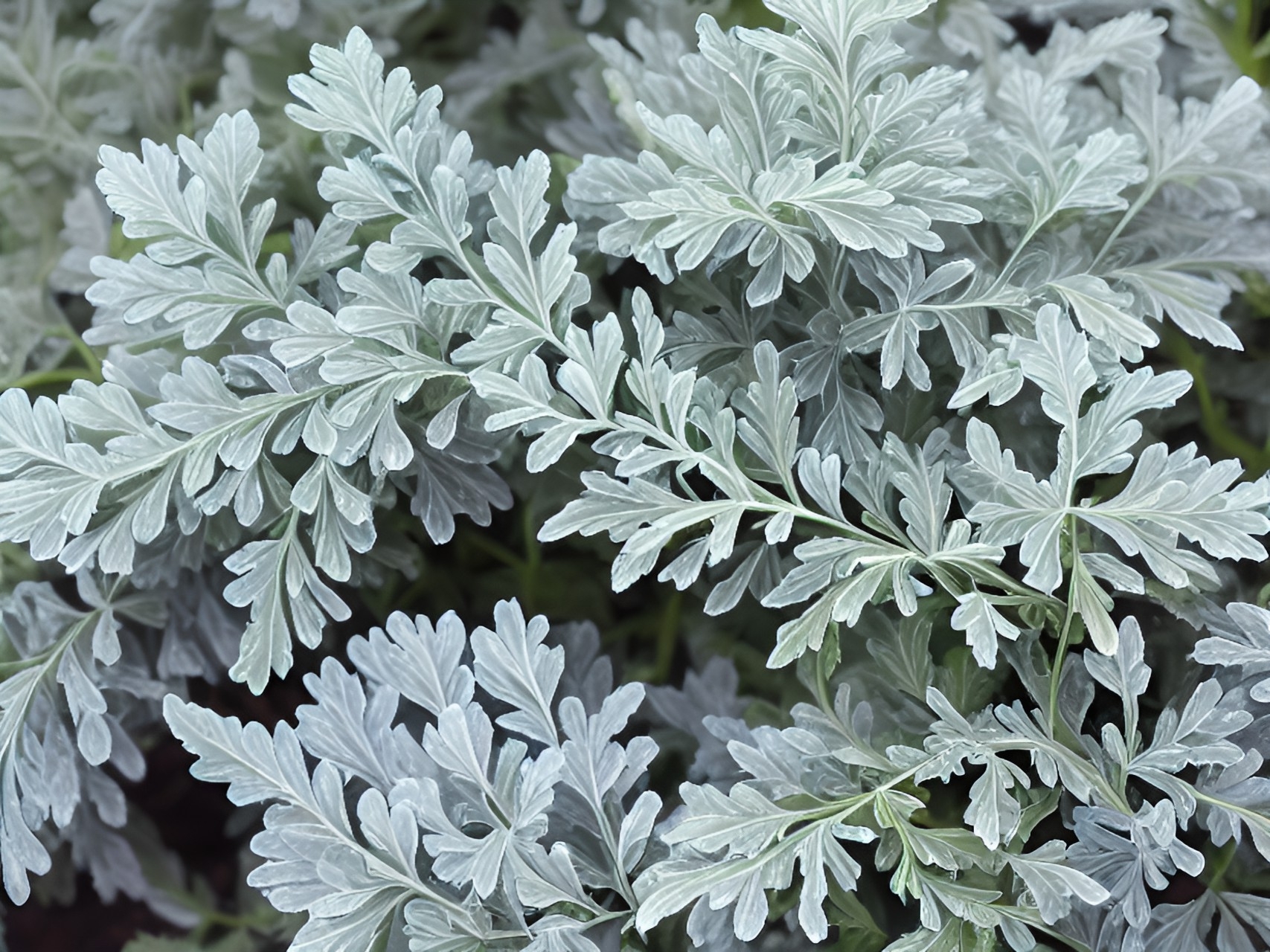Artemesia
This is an undershrub otherwise known as wormwood. Its leaves are bitter, aromatic and covered by fine hairs which reflect sunlight and release a fragrant oil. These adaptions allow it to survive in the arid and harshly sunny Shamsi Desert and Arabiyyah Desert despite lacking radiant magic. Though it can also be found in temperate or coastal areas of Eluziar and even the Continent Beyond.
There are two main variants of this herb, the Tagam variant and the Apsenti variant. Apsenti has a variety of medicinal uses but is more well known as an ingredient in absinthe and for flavoring other spirits. It can be toxic in very high doses, causing seizures. Tagam on the other hand is used as an antiseptic and antispasmodic medicine, especially by the Irani as a tea for diabetes. Otherwise it is a suitable fodder for grazing animals. The absinthe alcohol made using this herb has an extremely high alcohol content, 170 proof. Thanks to its Kaithur, concoctions with artemesia are known to cause hallucinations fed by Kanilwyr's Plane and one other plane, a popular drink for artists and seers. Celestial mages in particular will drink this to enhance their prophecies during a full moon.
|
First AbilityKanilwyr's Shadow Thanks to Kanilwyr's Shadow are able to induce visions or hallucinations of or from Kanilwyr's Plane. It does not have control over what a target sees, simply tapping into random memories or knowledge stored in the plane.
Second AbilityCharnos' Shadow Those with Charnos' Shadow can generate illusions or hallucinations fueled by the part of a target's mind space which is connected to Charnos.
Sylthari's Shadow Artemesia with Sylthari's Shadow can generate walking dreams, illusions or hallucinations which cause states related to Sylthari (charming, fixation, calming, drowsiness, etc.) or which imitate places or events occurring within space. Sometimes both at the same time.
Rylmar's Shadow Those with Rylmar's Shadow can generate illusions or hallucinations fueled by the part of a target's mind space which is connected to Rylmar.
|
Anatomy |
Tagam
|
Apsenti
|
Habitat |
Apsenti grows on uncultivated arid earth, on rocky slopes and at the edge of footpaths and fields. It establishes itself best where there is little competition from other plants. It prefers dry soil and is commonly found in fence rows. Tagam grows most commonly on dry steppes, loess and desert soils and in coastal regions. It prefers arid soil. Artemesia can be found in both Arabiyyan and Shamsi Deserts, Parsa, Sesli Plato, Flumen Pontem, Eluzian Valley, Hellas and supposedly the mysterious Continent Beyond. |
Life Cycle
Tagam blooms from September to December with 2-5 yellowish hermaphrodite flowers per head. Apsenti flowers from early summer to early autumn, pollinated via wind. Its fruit are small achene, seed dispersal relying on simple gravity. Seeds are small and easily scattered, each stem producing up to 50,000 seeds. |
Uses |
TagamThis is a popular medicinal herb, considered a remedy for a wide range of ailments purely due to its own chemical composition rather than its magical properties. It is considered carminative, chalogogue, delirative, diuretic, emmenagogue, sedative, stomachic, tonic and vermifuge. It can be used to treat diabetes in the form of a tea commonly used by the Irani peoples. It is otherwise useful for treating diarrhea, vomiting, flatulence, fever, measles, jaundice, poisoning and cardiac arrhythmia. Some will also use it to treat parasitic infections and the plant is burnt, the fumes inhaled, in order to treat coughs or chest, stomach or muscular pains.
Tagam Artemisia can be crushed and applied to hair to strengthen it or applied to cuts and skin disorders. Macerated leaves are combined with olive oil and applied to skin lesions. Finally, water extract has analgesic and anti-inflammatory effects; plus a weak antibacterial activity. It's material magic is used to treat burnout and melancholy, not very strong in its own but can become more potent when used in True Magic alchemy and enchantment. |
ApsentiThis variety is used as an ornamental plant, medicinally, in brewing alcohol and as a component for Material Magic. It is believed to be antifungal, neuroprotective, insecticidal, antimicrobial, anthelmintic, acaricid, antimalarial, antidepressant, and hepatoprotective. It's used to treat upset stomach, as a bitter to counteract poor appetite, for infectious diseases, IBS and neuropathy.
It is an important ingredient for making the spirit absinthe and for flavoring various other spirits and wines. It is used to spice mead as well and sometimes as a substitute for mint in teas. This variant is popular for material magic or alchemy, offering hallucinations fueled by Kanilwyr and either Charnos, Rylmar or Sylthari. |











Comments